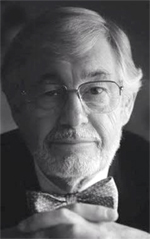Dr. Per-Ingvar Brånemark
May 3, 1929 - December 20, 2014
 On December 20, 2014 the world lost a legend, Dr. P-I Brånemark. Prof. Brånemark was a researcher, educator, clinician and visionary. His career changed the practice of dentistry and also changed the world. His research interest was in the field of soft and hard tissue healing. Healing was observed through a lens encased in titanium to see cellular activity occurring at the surface of the lens. Once the healing was achieved the animal was sacrificed and the lens apparatus was scheduled to be retrieved. Interestingly, the Titanium lens housing remained affixed to the surrounding bone.
On December 20, 2014 the world lost a legend, Dr. P-I Brånemark. Prof. Brånemark was a researcher, educator, clinician and visionary. His career changed the practice of dentistry and also changed the world. His research interest was in the field of soft and hard tissue healing. Healing was observed through a lens encased in titanium to see cellular activity occurring at the surface of the lens. Once the healing was achieved the animal was sacrificed and the lens apparatus was scheduled to be retrieved. Interestingly, the Titanium lens housing remained affixed to the surrounding bone.
At that point the investigators recognized that a unique union of bone and implanted Titanium had occurred. This may be a serendipitous series of events but serendipity demands keen insight to appreciate the fortunate chain of events. Indeed, this is what Brånemark and colleagues appreciated, and this became the first demonstration of osseointegration. Today we see rapid commercialization of basic science research but in the early 1950's such translational research was not terribly common. Hence Brånemark did not move osseointegration from the laboratory to the clinical floor until the initial observations were confirmed and demonstrated to be repeatable. The team conducted animal research for more than a decade before initiating human research and that research went on for another decade before it was presented to the world.
In describing the performance of these implants Brånemark proved himself to be a charismatic educator. Once osseointegration was presented to the dental community Brånemark was the primary voice to explain the formula. It was not simple nor was it rapid but it was predictable and that level of predictability had not been previously observed in implant dentistry.
His vision extended beyond devices. He had true compassion for the level of debilitation that patients experience. If you look at his ideas you will see innovative designs that, once embraced, could lead to more economical services for a broad number of patients in need. Although we mourn the loss of Professor P-I Brånemark we also celebrate the honor of having known him and thank our good fortunes for the knowledge that he provided.
